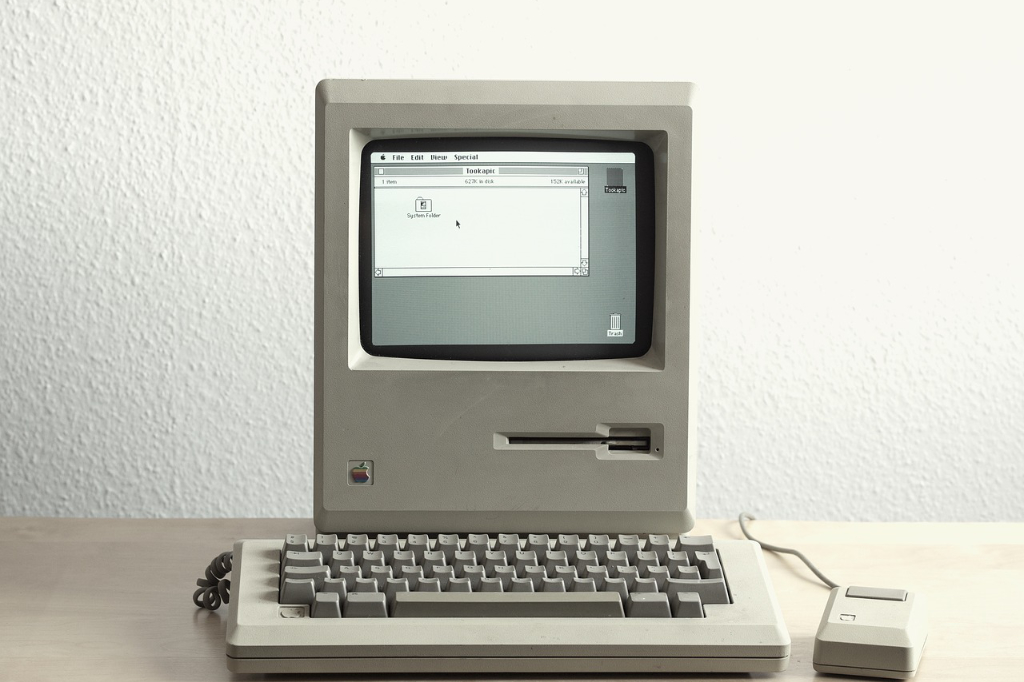Web 3.0 – A New Path for Ecommerce Businesses
The web as we know it evolved continuously over the years. If the first iteration, which ran from 1991 to 2004 was mostly a bunch of static pages which allowed users to access facts, information, and content from the sources, the second iteration allowed users’ interaction, being responsible for creating communities, collaborations, dialogue, and social media. It also made eCommerce possible. Web 3.0, however, will be way more than that. It will be the home of Artificial Intelligence and Machine Learning, of virtual worlds, 3D graphics, blockchain technologies and decentralized finances. It will be a safer system which ultimately lets users become content owners instead of just content users.
As experts in e-Commerce development services, we’re here to help you choose the right solution for your business.
A brief history – Web 1.0 and Web 2.0
Often referred to as the “Static Web’, the internet’s first iteration was characterized by static HTML pages that allowed for limited interactivity. Web 1.0 was designed to help people better find information, and the only notable graphics were achieved using GIF files. Web 1.0 was quite rudimentary, mainly because the content was generated by a limited number of people.
Web 2.0 changed all that, because it allowed for participating and contributing. In fact, Web 2.0 is known as “the participative social Web”, encouraging various forms of interaction, including podcasting, social media participation, tagging, blogging, and commenting. These interactions are often facilitated through RSS curation, social networking, and web content voting mechanisms.

Web 2.0 contains dynamic content that can respond to user input and incorporates sophisticated Application Programming Interfaces (APIs) to enhance functionality. Unlike its predecessor, Web 2.0 is used by society at large, making it an omnipresent platform for communication, information sharing, and eCommerce.
This new level of interactivity and user participation transformed the eCommerce landscape dramatically. Features like customer reviews, interactive catalogs, and social media with its user-generated content became integral elements of the eCommerce experience.
Showcasing products went beyond static images and textual descriptions to include rich media such as videos, 360-degree product views, and zoomable high-resolution images. Coupled with powerful search and filter options, online stores provided a more engaging, and personalized shopping experience.
Today’s web experiences are increasingly dynamic and interactive, thanks to the computational power and flexibility offered by JavaScript and related technologies. This shift has not only elevated the visual and interactive quality of web content but also opened up new possibilities for storytelling, data visualization, and user engagement on the web. Libraries and frameworks like jQuery, D3.js, and Three.js further expanded these capabilities, making it easier for developers to implement advanced graphics and animations with optimized performance.
eCommerce functionalities received a considerable boost with the recent advancements in AI and machine learning algorithms that can now offer product recommendations based on individual user behavior, enhancing the likelihood of customer conversion and fostering brand loyalty.
The need for a new Web iteration
Unfortunately, Web 2.0 has structural limitations that can impede the full realization of new complex technologies. First, its centralized architectures, with data residing in siloed databases controlled by specific companies or organizations, obstruct the free flow of data, limiting the datasets that AI algorithms can learn from. This, of course, affects the quality of insights AI can generate. Additionally, Web 2.0 lacks the semantic understanding and contextual awareness that are crucial for advanced AI applications. For AI technologies like machine learning to be most effective, they need not just large volumes of data, but data that is structured, tagged, and semantically rich.
This is why a new web iteration, where data is interoperable and universally accessible and which facilitates not only human-to-human but also machine-to-machine interactions, is urgently needed.
Decentralization and data ownership
Decentralization is one of the key architectural shifts in Web 3.0. Traditional web services are built on centralized servers controlled by single entities, making them vulnerable to outages, censorship, and data breaches. In contrast, Web 3.0 relies on decentralized networks, often powered by blockchain technology, which distributes data across multiple nodes. With the built-in protection provided by blockchain technologies, this approach enhances security, promotes data sovereignty, and allows for greater resilience against failures or attacks. If nowadays, users willingly swap their personal data for the right to use the platforms freely (Google, Facebook, etc), with the new Web, users will own their data, being able to monetize it if they choose to do so.
From keywords to semantics
With the current Web iteration, search machines are trained to interpret keywords, which, let’s face it, was a major breakthrough of its time, but still requires users to sift through unrelated or less relevant information.
On the other hand, Web 3.0 aims not only to work with keywords, but also to understand the context and meaning behind them, offering more precise and relevant results. Further development of semantic technologies like RDF (Resource Description Framework) and OWL (Web Ontology Language) will enable machines to understand the relationships between different pieces of information. This facilitates more accurate search results and recommendations, making the web more intuitive and user-centric.
Better support for AI and machine learning
Web 3.0 will create an environment where advanced technologies like AI and machine learning will thrive. These technologies allow for predictive analytics, natural language processing, and complex algorithms that can personalize user experiences in unprecedented ways. The shift towards a free flow of data, combined with an extended capability to understand semantics will offer AI and machine learning the best conditions to reach their fullest potential.
Imagine a web where your virtual assistants not only understand your requests but can also anticipate your needs based on your behavior, or a medical research web portal that can understand the context of various research papers to give a more holistic view.This transition essentially means that the web evolves from being a massive information repository to a smart tool for understanding and problem-solving, making Web 3.0 a truly revolutionary step in the evolution of the internet.
Edge connectivity and The IoT
The idea of edge computing is foundational to Web 3.0. It implies moving computing and storage functions closer to data sources at the edge of the network, making the distance that data needs to travel shorter. Edge computing will allow data-heavy immersive experiences that include video, AI, augmented reality (AR) and virtual reality (VR) to be processed faster and with low latency, working seamlessly. Thanks to this approach and faster internet speeds achieved through 5G, the first steps are taken towards a smart world where all things are interconnected, making lives more efficient, convenient, and safer.
The Benefits of Web 3.0 for Ecommerce
One sector where Web 3.0 will bring immense benefits is online retail. Being able to leverage AI at its fullest capacity, as well as having a secure environment with multiple payment options, the capacity to create immersive experiences seamlessly, the Internet of Things – all these are the best premises for creating that unique shopping experience.

Personalization is the word to watch in future eCommerce, and whether we talk about product recommendations, discounts and promotions, marketing messages transmitted to potential clients, or smart stocks management, retailers have started to invest heavily in AI-driven technologies to offer customers a unique experience, tailored to their specific needs. Based on its decentralization and semantics capabilities, Web 3.0 will help AI reach its fullest capacity, with immense benefits for the eCommerce sector.
The enhanced security that Web 3.0 brings will create the premises for new and innovative business models. Decentralized marketplaces, driven by blockchain technologies, will provide a safe haven for merchants to sell their products, without fears that the marketplace owner uses their data for financial benefits. There will be no entity to act as the middleman for transactions, instead, decentralized marketplaces will operate on peer-to-peer networks, enabled by blockchain technology.
It is known that Amazon executives had privileged access to data on individual third-party sellers, which was then used to develop the company’s own products, despite it being in violation of company policy. With a decentralized marketplace such actions would simply not be possible.
With many online retailers looking to expand into cross border sales, the need for simpler financial transactions is more acute than ever. Payments with cryptocurrencies like Bitcoin and Ethereum can solve the problem , because they operate totally opposed to traditional payment systems that require a central authority like a bank to validate and process transactions, making it both time-consuming and costly. In contrast, cryptocurrencies allow for instantaneous, peer-to-peer transactions with minimal fees, and because they are also based on blockchain technology, they inherit its security features. Ethereum takes this a step further by providing a platform for creating smart contracts, thus enhancing the functionality and range of secure, decentralized transactions.
One of the main advantages of Web 3.0 is that it will allow eCommerce to be more fun, shifting from a purchasing process to an immersive and pleasant experience. Augmented and virtual reality are on a steady path to becoming standard for retail companies, because they allow for an interactive experience with the product before making the buying decision. At the moment, the technology requires high computing power, fast graphics rendering and ultra-low latency, which is challenging to achieve through the web infrastructure built for Web 2.0., but within a Web 3.0 context, these technologies will be widely available.
The idea of edge computing will also allow the integration of the Internet of Things (IoT) into the realm of smart commerce. Imagine a retail environment where smart sensors can track inventory levels in real-time, triggering automated restocking processes and dynamic pricing adjustments; or, in a consumer context, smart refrigerators that can track expiration dates and place orders for groceries when supplies run low. By connecting various touchpoints in the commerce ecosystem through IoT, businesses will be able to enhance operational efficiency, and create a more personalized, convenient experience for consumers.
In reality, although Web 3.0 offers a vision of a more decentralized, secure, and user-centric web, the transition from Web 2.0 faces multiple challenges that will require a concerted effort to overcome. The technologies involved are in early stages, many still having undiscovered vulnerabilities. Others, like blockchains, are resource-intensive, consuming large amounts of energy. At the same time, the costs of adopting or transitioning to new technologies can be prohibitive. Not to mention that the legal frameworks around decentralized technologies like blockchain and cryptocurrencies are still in development.
There are many predictions, but a concrete date for a full transition is not in sight. However, one thing is sure – with the rapid advancements in technology, Web 3.0 is slowly making its way into our lives.
If you want to know more about our list of services at Clever++, please visit our website.




